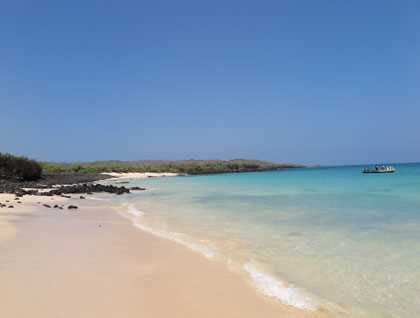Santa Cruz Island is a vast place made up of over 969 square kilometers of diverse wildlife and flora. The eroded volcanos at the northwest side of this island create the perfect landscape for the unique reptiles in this area, which prefer dry zone vegetation. The land iguanas in this particular site were almost at the border of the extinction, due to the introduction of feral dogs, goats, pigs, cats and even donkeys. Most of the iguanas that remain here today survived due to a small group of researchers who decided to reproduce them in captivity; however there was not much information about this population in the beginning, and it took many years to make a positive change in the conservation status of this peculiar species.
Almost 95% of the feral dogs and most pigs were removed from Dragon Hill, and only a few goats still remain, as they are low impact to the wildlife. Once this was under control, the initiative began, to reintroduce the young iguanas that were hatched in captivity. In the past decade, censes of the population demonstrated the increase of the almost extinct land iguanas, and almost 1860 members of this species were reported to be alive and successfully reproducing in the wild. By the year 2007, the reproduction program was no longer necessary and was canceled. Another example to show that the efforts of conservation are key to the survival of threatened species.
Early this morning, our Expedition Leader, Paula, gave us the weather update. Our guests split into group, some of whom went for a hike over the rocky trails in search of land iguanas, while others enjoyed a morning Zodiac ride along the coastal region.
We returned to the ship for a great breakfast before preparing for our afternoon activity: snorkeling. The waters in this region are deep, but today it was calm and the visibility was excellent. Our guests had a great time exploring the underwater realm.
Lunch was exciting, as our galley staff had prepared an authentic Ecuadorian menu—many of our guests had never tasted Ecuadorian cuisine, and I personally believe there are not many places in our continent with that much variety in flavor and color. Our hotel staff explained the different dishes and the traditions associated with them, and we all left happy and full!
It has been another exciting and educational day in the Galapagos!







